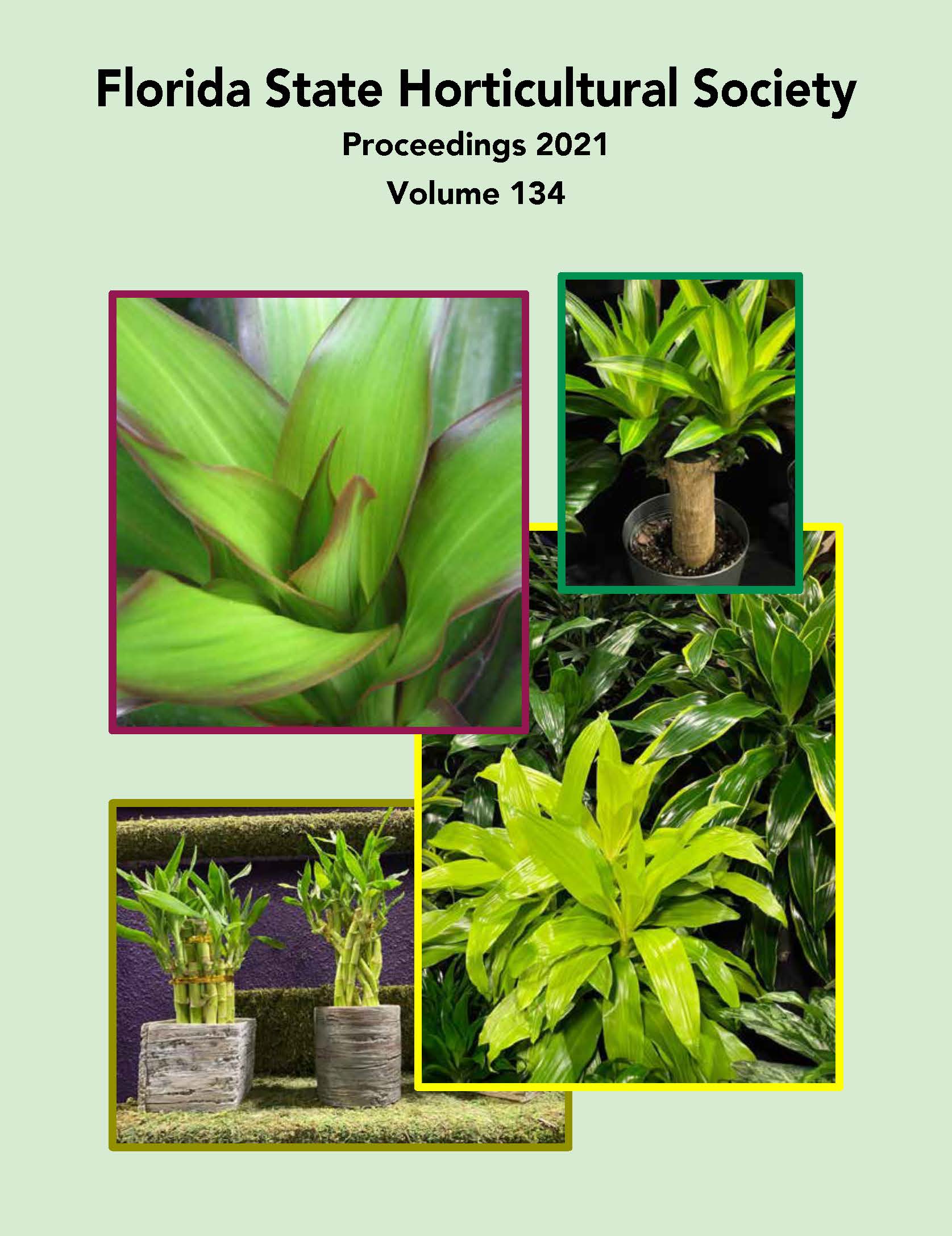Abstract
Central Florida nursery growers have reported disease management challenges since 2004 impacting the production of ornamental Viburnum spp. Reported symptoms included blighting and rapid defoliation that were historically known as downy mildew (DM). Growers indicated that common labeled fungicides failed to provide acceptable levels of disease control. In the spring of 2020, symptomatic plant samples were collected from local nurseries in Hillsborough and Manatee Counties. Identification of isolated fungi revealed the presence of multiple pathogens throughout the growing seasons (spring, summer, and fall), including Plasmopara sp., Cercospora sp., Corynespora sp., Colletotrichum sp., Phoma sp., Phyllosticta sp., and Pestalotiopsis sp. These diseases had symptom progression very similar to DM and were not easily identified. Two fungicide trials were conducted at a commercial nursery. The first trial, conducted during July and August, evaluated 13 fungicides available to nursery growers. The second trial, conducted during September and October, evaluated 7 fungicides. Both trials included a non-treated control, with all treatments replicated (n=6) and arranged in randomized complete blocks. Not surprisingly, fungicides that target DM oomycetes (i.e., Plasmopara sp.), containing ametoctradin, cyazofamid, dimethomorph, fluopicolide, mandipropamid, mefenoxam, and oxathiapiprolin, failed to reduce disease severity. Fungicides containing benzovindiflupyr, difenoconazole, fluxapyroxad, and pyraclostrobin that typically target true fungi, statistically reduced disease severity. Copper sulfate and mancozeb, or the systemic fungicide, flutriafol, failed to reduce disease severity, while a generic phosphite gave an intermediate level of control. Results stress the importance of an appropriate disease diagnosis to avoid making ineffective fungicide applications.

